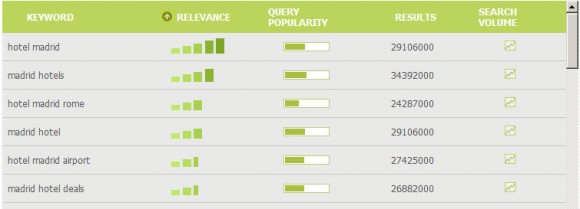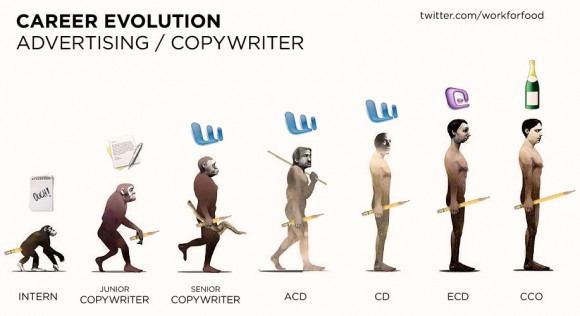 The SEO copywriting is a technique used for websites’ texts, that produces high quality and persuasive content for the website visitors and, at the same time, targets specific search terms in order to be ranked highly by the search engines.
The SEO copywriting is a technique used for websites’ texts, that produces high quality and persuasive content for the website visitors and, at the same time, targets specific search terms in order to be ranked highly by the search engines.
The search engine placement and traffic conversion starts with quality content. The text displayed in web pages is the main source of keywords for which the website will be referenced in search engines. The search engines take into account many factors to determine the relevance of a web page for a specific keyword. Below we list the most important tips for optimizing and improving the page ranking on Search Engine Results Pages (aka SERPs):
1. Conduct keyword research
Creating a list of strategic keywords and phrases before starting to write can help you structure your content, thus making writing easier and resulting into a copy easier to read. Search for terms that your customers might search when they look for products and services like yours. Use the Keyword research toolto identify good performing keywords. Check the popularity of each keyword by comparing the number of results in Google Search and in Adwords and find out how difficult it is to achieve high rankings for specific keywords using the Keyword Difficulty Tool.
Keywords can help your creative thinking!

2. Mind the KeywordRank, not Keyword density
Keyword density measures the number of times that a keyword appears on a page. It is a percentage which is calculated by dividing the number of occurrences of one keyword with the total number of words contained on the text. Several years ago this played a significant role in achieving higher rankings. This technique has been heavily used by webmasters & SEOs in order to improve their rankings, nevertheless due to the excessive use of this technique their content looked unattractive and spammy. Repeating the same word again and again will no longer help your rankings but on the contrary it can negatively affect them because search engines developed techniques to identify keyword stuffing & low quality content.

Nowadays other metrics play significant part on SEO. A good indicator for Keyword Optimization is theKeywordRank which is a metric that measures how optimized a keyword is within a page. This special rank can be used to distinguish the important amongst the not important keywords. It takes into account not only the number of occurrences but also the weight of each word on the text, the position within the document, how optimized the word is, its relevance within the text and more. In addition to that, KeywordRank will tell you if a particular keyword is over optimized and whether it can raise spammy signals on the search engines. To calculate the KeywordRank of your keywords and improve your Onpage Optimization use the Keyword Analyzer tool.
3. Work on the structure of your Texts
The keywords should be included in the body text as naturally as possible. Make sure you use Titles, split your content in segments and organize it appropriately to make it easier to read. Moreover the page should be structured so that your main page keywords appear on the first paragraph. Remember that the text that appears above the fold is important both for the Search Engines and for the users. Repeating your main keywords naturally can help you achieve different keyword combinations. Avoid keyword stuffing, unnecessary repeating and ensure that your main terms are scattered throughout the rest of the text.
Don’t forget that the main goal is to create content that engages the visitors and communicates to them effectively the benefits of the products or services offered. Even the most powerful keywords can’t transform a poor copy; they just add extra flavour to a good one. Use them wisely or you’ll spoil the whole page.
4. Avoid duplicate content
Duplicate content is a piece of content that appears on 2 or more separate URLs (internal or external). It heavily affects SEO and it can create major problems on our strategy. Duplicate content messes up with your site architecture and it reduces the strength of your pages. In addition to that, large amount of duplicate content can create problems on the way that your site is analyzed, crawled and indexed by search engines. As a result writing unique texts and avoiding republishing content from other sources can keep you safe from duplicate content issues and search engine bans.

Use the Duplicate content tool to find how similar two different URLs are.
5. Mind the On-page Optimization factors
The goal of on-page optimization is to help the search engines understand your content easier. A big part of the SEO consists in following some standard guidelines which allow search engines to index, analyze and rank your pages properly. Here are few on-page factors that you should always have in mind:
- Page titles: Incorporate the selected keywords in each page title. Titles are super important for SEO.
- Internal link structure: ensure that all your pages can be found by the search engines.
- Page structure, specifically Headings (h1 & h2 etc): the heading structure defines which parts of your content are important, and how they’re interconnected.
- Meta Description tags: The Meta description is a meta-data field appearing sometimes in the search results as snippets. Title & META description heavily affect the CTR on SERPs.
- Schema.org Markup: Schema.org is a collection of the HTML tags/attributes etc which help search engines understand better the content of a page. It allows you to define relationships, types of content etc and it is currently supported by most of the major Search Engines such as Google, Yahoo, Bing, Yandex etc.
Get the recipe right! And don’t forget: The main goal of the SEO copywriting remains writing interestingcontent that people want to read and link to. Last but not least, don’t forget to evolve your copywriting:





No comments:
Post a Comment